On May 15th AMD will launch the successor to the successful A series Llano processors, code-named Trinity. The first presentation slides have leaked and we see a bunch of news and improvements over last generation.
The nex generation APU processors from AMD will be extra important, now that Intel has managed to make an integrated graphics processor that can compete with AMD’s alternative. The company has even managed to reduce energy consumption over previous generations while also improving performance, since Trinity is rated at only 17W, 25W and 35W TDP for notebooks. For desktops it is still 65W and 100W that applies. Trinity will sport two Piledriver modules that build on the Bulldozer architecture, and it looks like there are some improvements in the architecture.
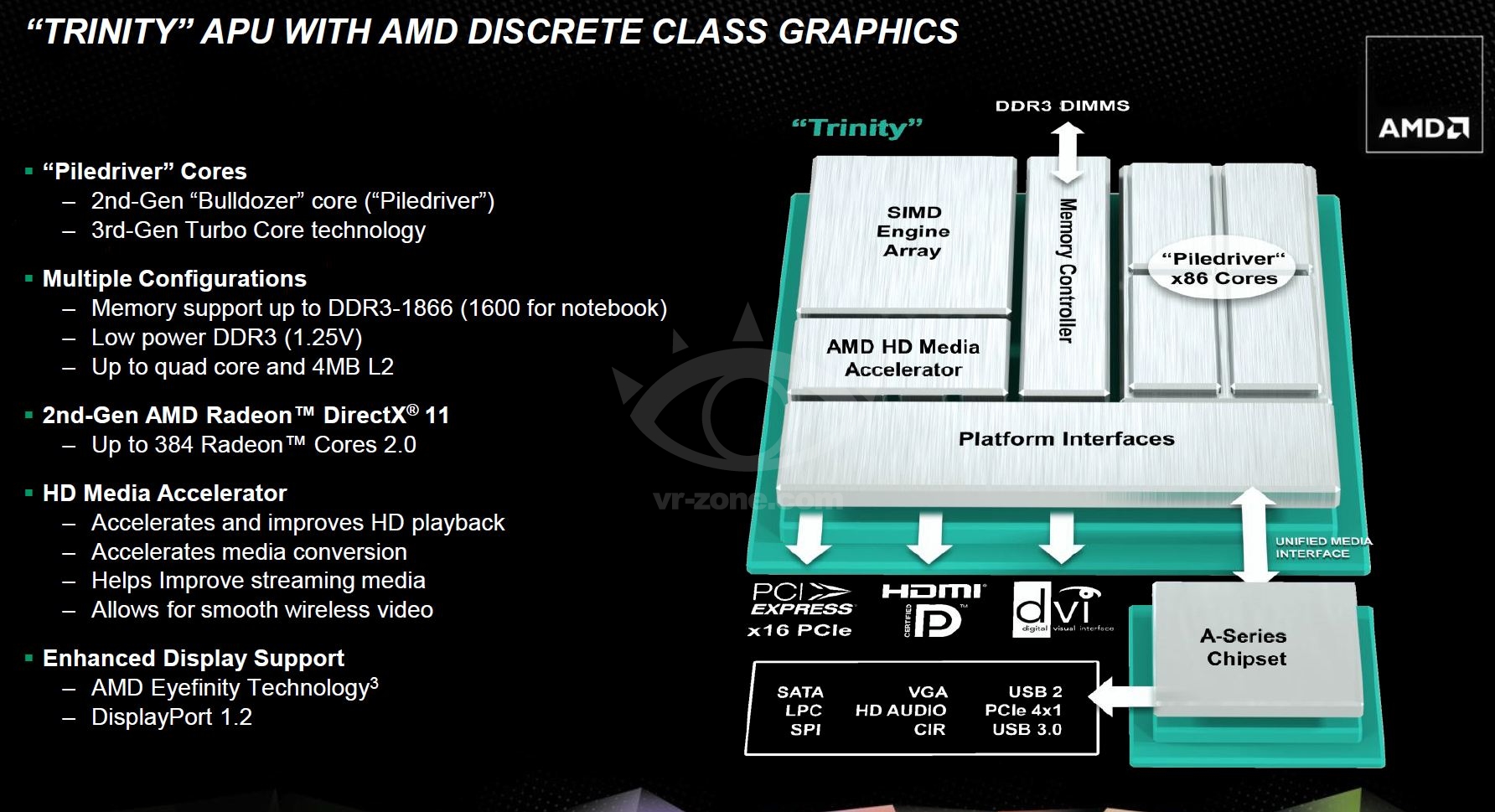 |
|
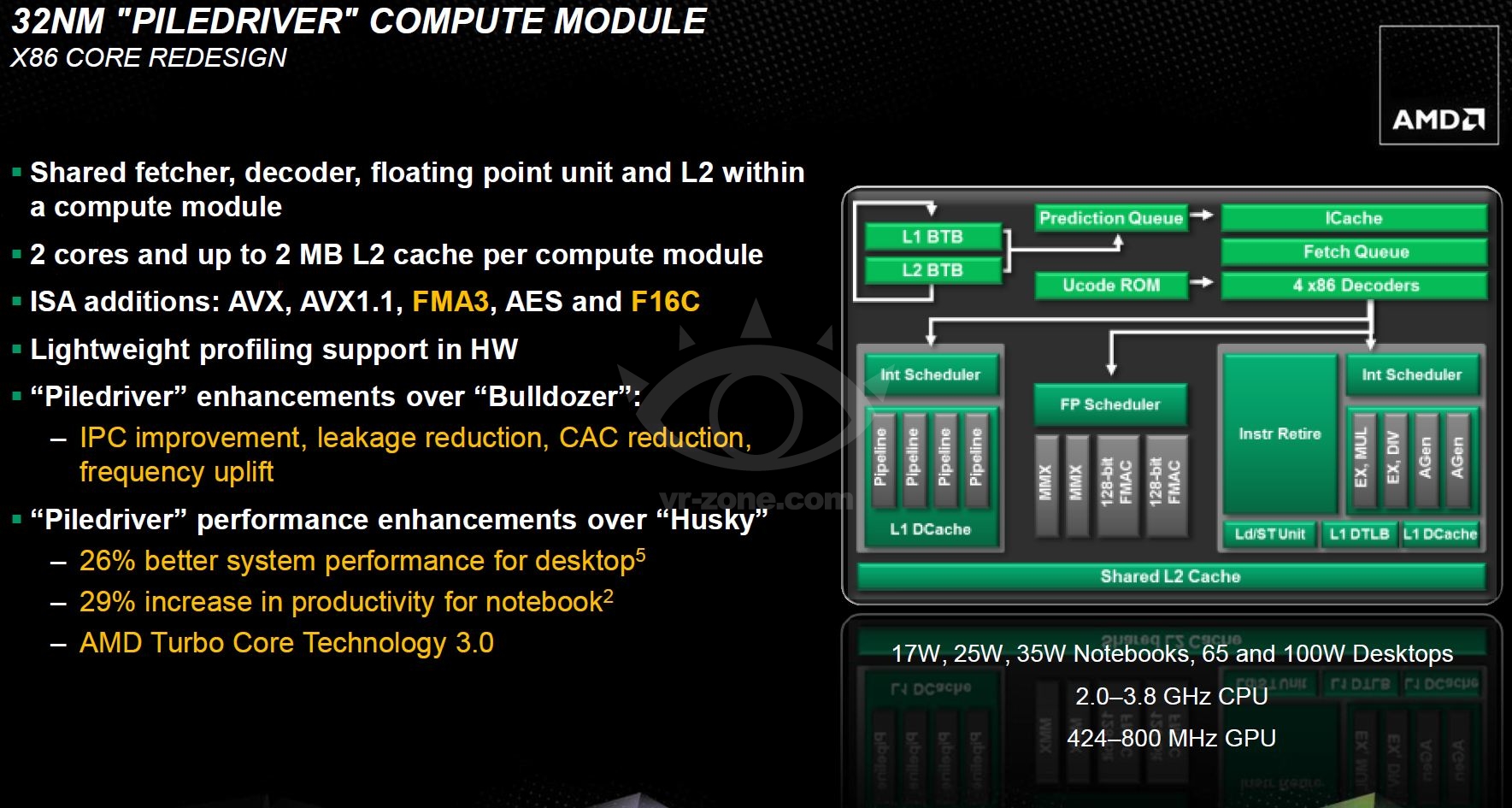 |
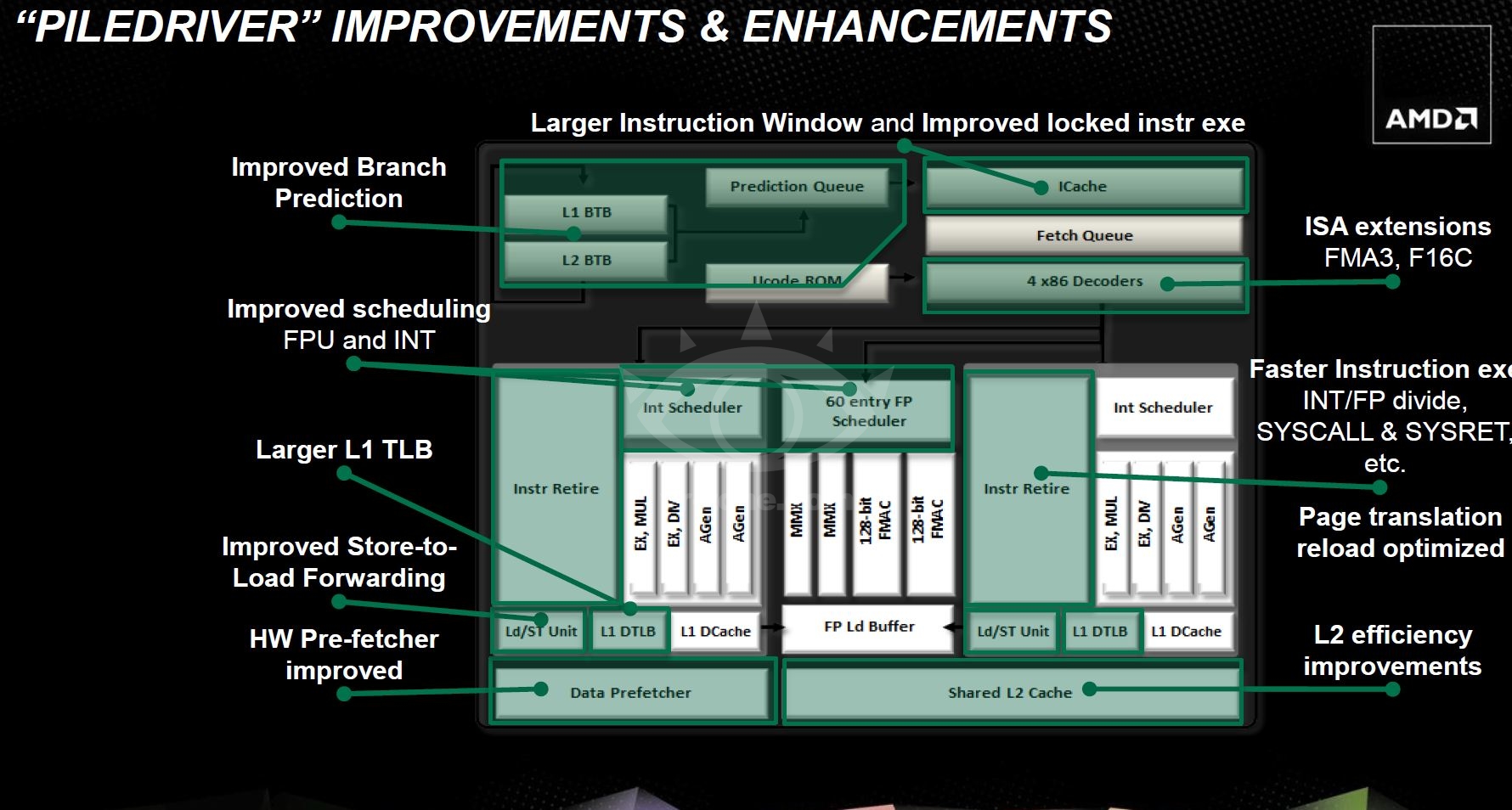 |
AMD has, besides adding more instructions, made changes to the entire architecture, but it looks like the units performing integers and floating point calculations have been left untouched. Everything from the scheduler, to dividers and cache have been optimized, which should lead to better performance at the same clock frequency as the processors in the FX series. All optimizations should lead to better energy efficiency, at the same time AMD has reduced the leakage.
When comparing to its Llano processors and the A series, AMD estimates 26 percent better performance and for notebooks 29 percent. The clock frequency of the processor should be between 2.0 to 3.8 GHz, depending on the model and target market. This sounds extra interesting for the coming 17W models that will compete against Intel and the ultrabook concept, and it should mean that these models will be at least 2.0 GHz.
As expected the new graphics processor builds on the same architecture used in Cayman (HD 6900 series), and we find six VLIW4 clusters for a total of 384 Radeon cores. Besides improved efficiency over Llano AMD has improved the tessellator, and the UVD engine to make the processor consume less power during video playback. As we have mentioned earlier Trinity will also bring EyeFinity support for up to three simultaneous monitors, but we don’t expect enough performance to play games across all three, but if you are looking for a cheaper solution for multi-monitor configurations it could be an interesting alternative.
The graphics processor comes clocked at 424 – 800 MHz, ince again it depends on the model and market segment. The coming top model for notebooks; A10-4600M will get a graphics processor with 384 Radeon cores at 496 MHz, with a Turbo mode at 685 MHz.
Turbo Core 3.0 will work on both the processing unit and graphics unit now, which is illustrated by the slide above. During processor intense applications it can owkr at higher clock frequencies, while graphically intense applications will raise the priority of the graphics processor. Turbo Core 3.0 is fully hardware based solution, and when AMD Trinity has to pick to boost the frequency of either, graphics always gets the priority.
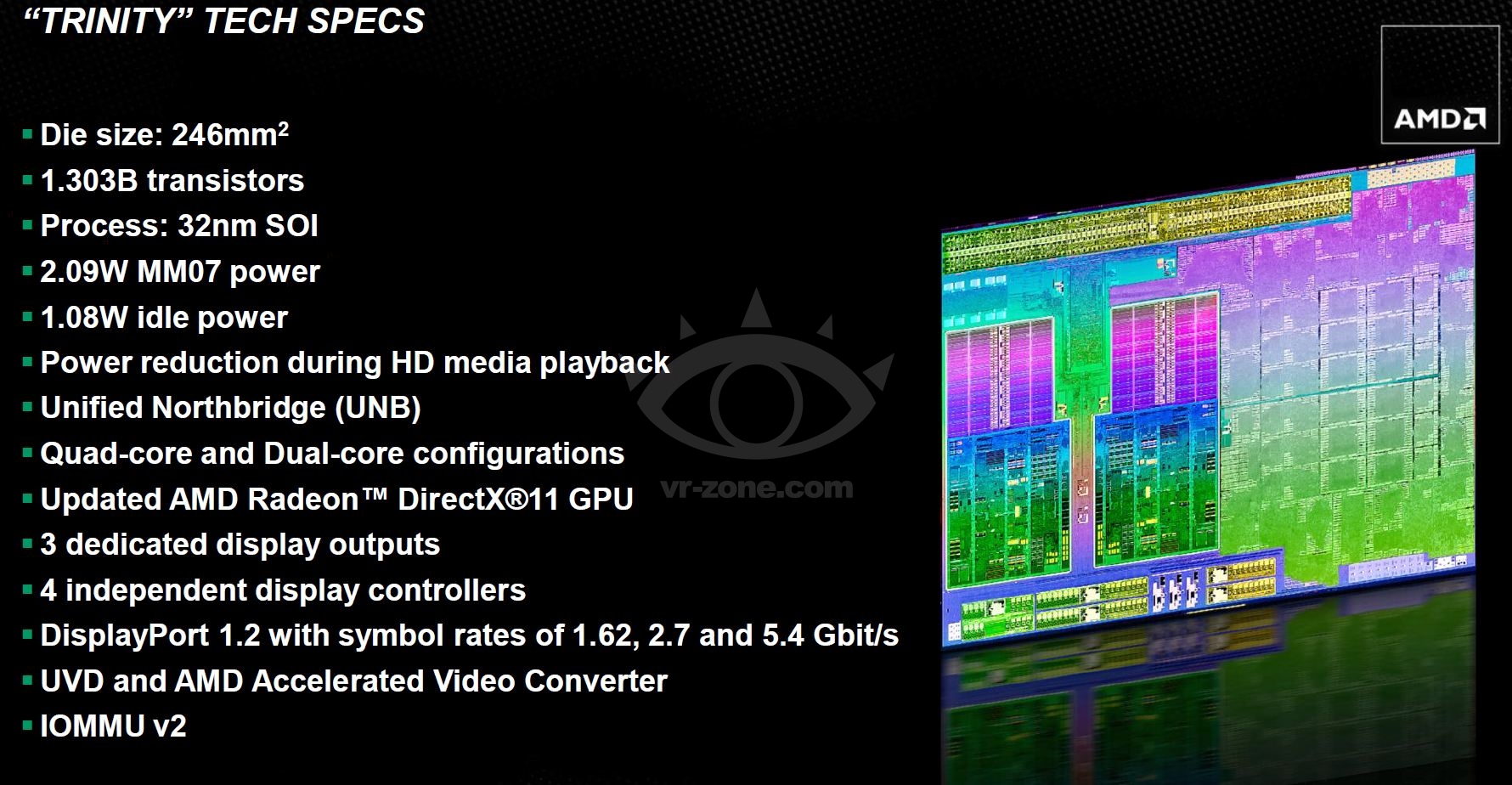 |
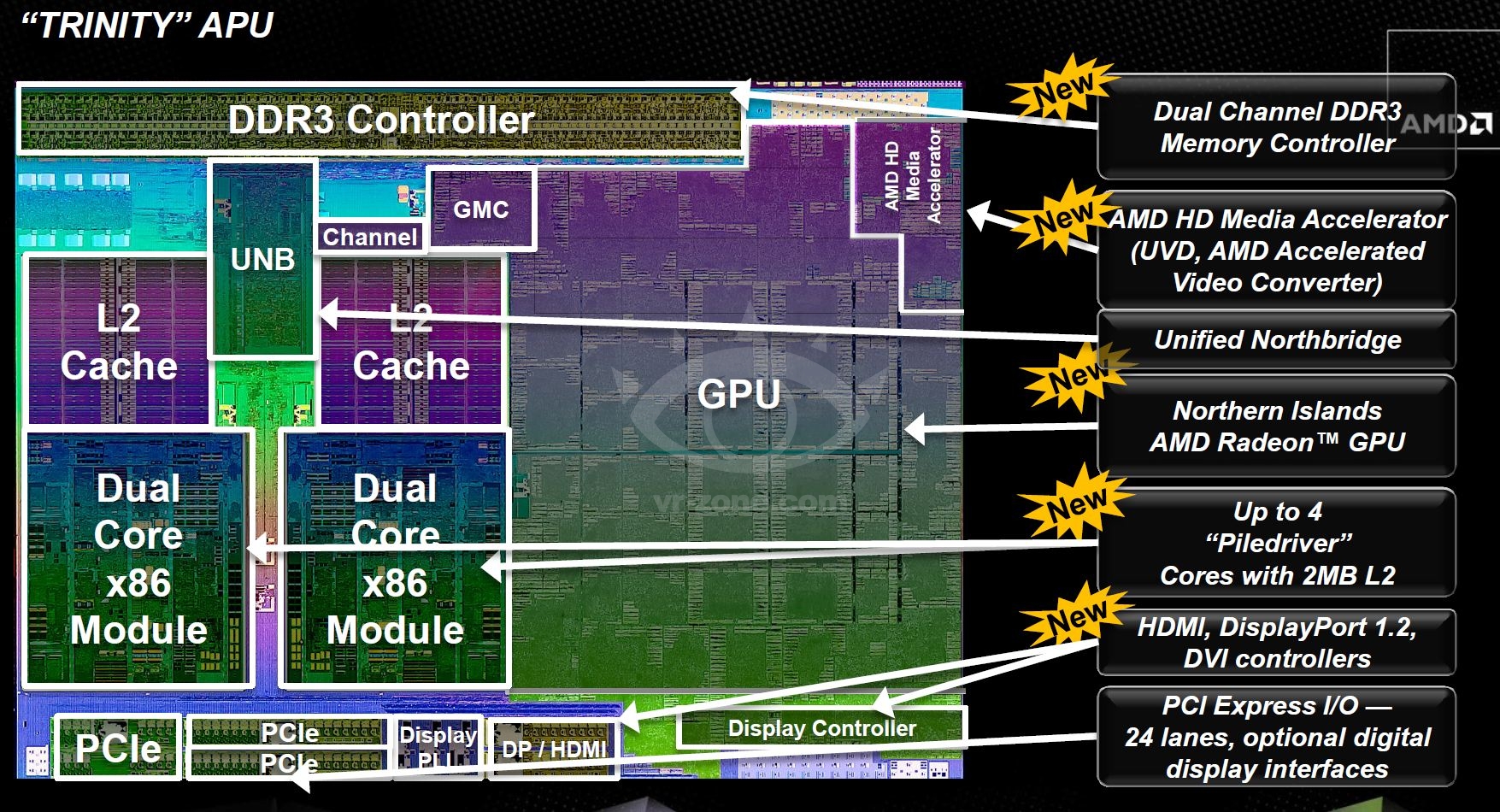 |
Trinity has grown in size and measures 249 mm², compared to Llano at 228 mm². The number of transistors has been reduced from 1,450 million to 1,303 million, which indicates a more efficient architecture, but we find it odd that the area has increased. Energy consumption when idel is down is now only 1.08 watt, which should improve battery times of notebooks.
We hope to sink our teeth into Trinity soon, and according to VR-Zone that published the slides the launch will happen on May 15th.






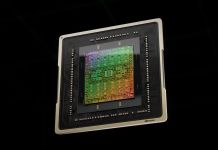











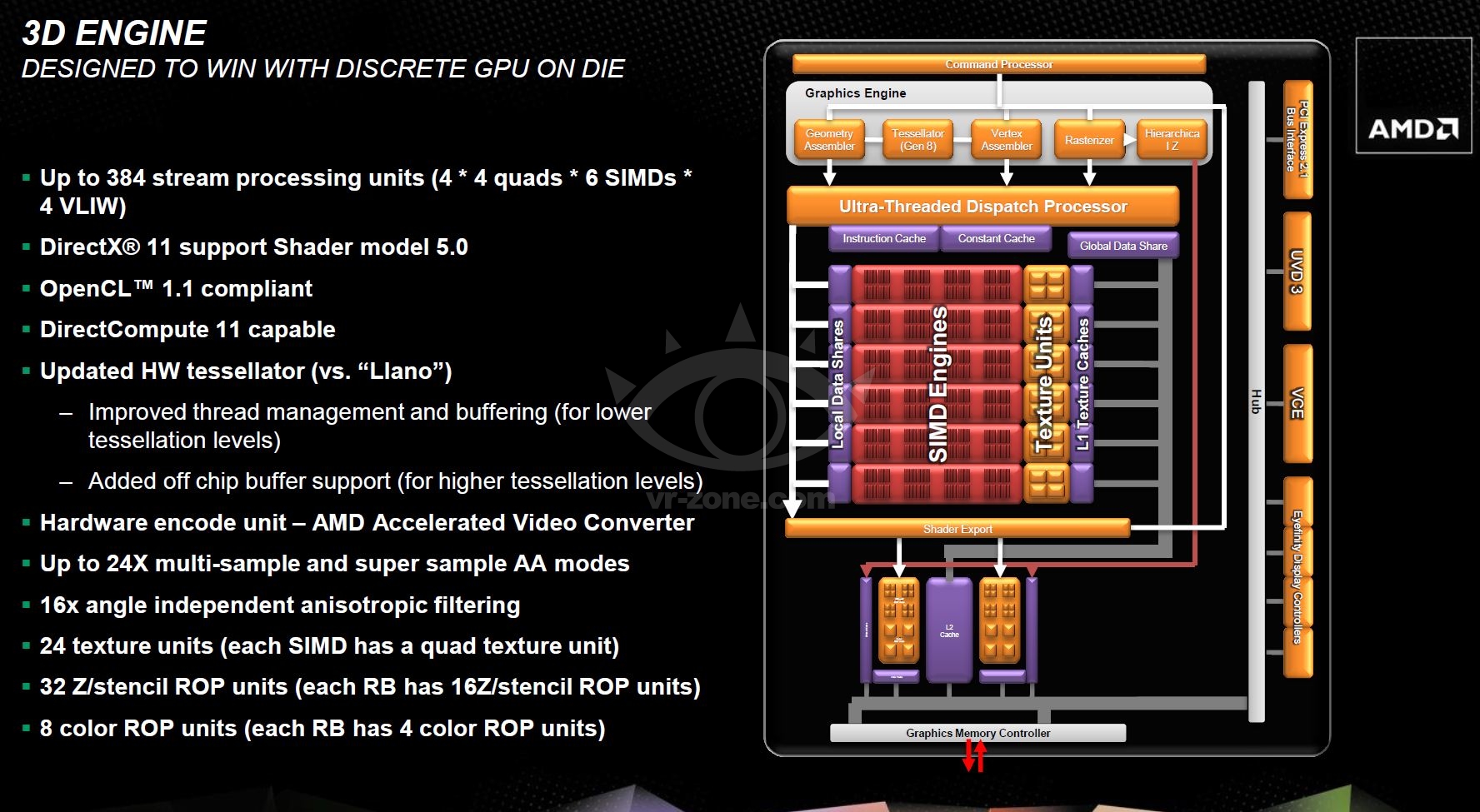
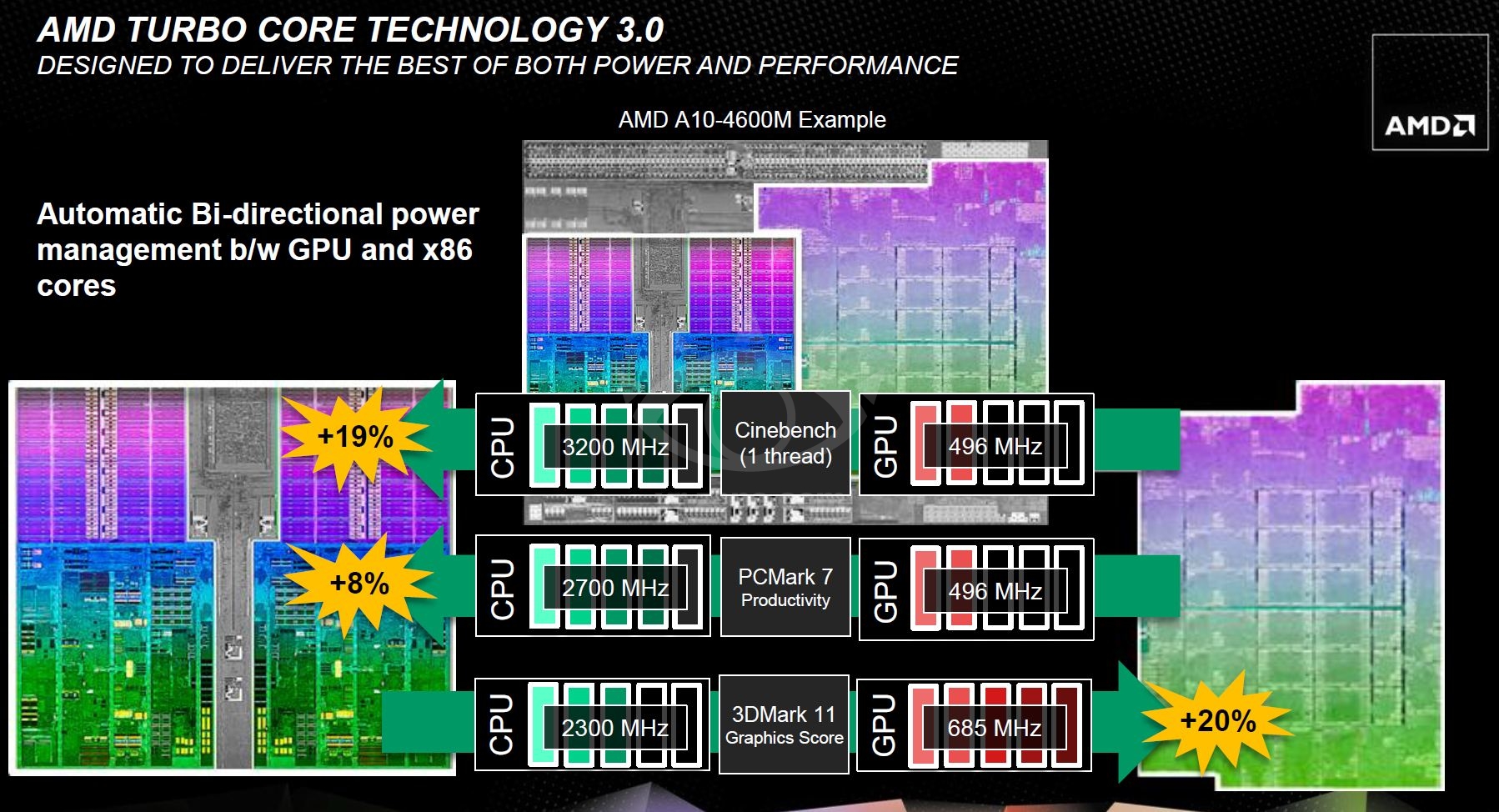



I think this is looking pretty good, I hope we find these apu’s in decent laptops that are like ultrabooks but less expensive. Go AMD Go.